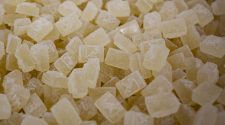Did you know that your child can get food poisoning from food that has come in contact with the interior of her lunch box?
To avoid food borne odors and possible food poisoning it’s important that lunch bags or boxes are routinely cleaned.
Ideally a kid lunch box should be wiped with a damp cloth which a little antibacterial soap has been added. The kid lunch box should be then rinsed and dried thoroughly. If your child’s lunch box can withstand regular washing and rinsing it should be done daily and left to drip dry. Never zip up or replace the lid on a kid lunch box that is not thoroughly dry.
Counter surfaces where prep work is done should be cleaned prior to bringing out any of your ingredients or wrap/container supplies. Likewise, your hands and any utensils should be thoroughly washed.
To protect your child from the threat of food poisoning consider freezing sandwiches ahead of time or packing a frozen/partially frozen drink or ice pack in your kid lunch box. Most school lunches are left to sit at room temperature for about four hours. Frozen sandwiches even in insulated bags will thaw during this time giving your child a fresh sandwich by lunch.
Sandwich freshness is maintained when you use fresh ingredients and you prepare and freeze quantities for no more than two weeks.
It’s important however that sandwich fillings are carefully selected as not all ingredients can be safely frozen. Good fillings include deli meats, cooked poultry and roast beef, low fat cheese, peanut butter (and jam) etc. Do not freeze eggs or sandwiches such as tuna or salmon with mayonnaise.
Sandwiches should be wrapped securely in plastic or sealed in plastic bags without excess air. To be sure that your sandwiches are used within the freshest time frame place all similar sandwiches back into the original bread bag and label with a best before date.














